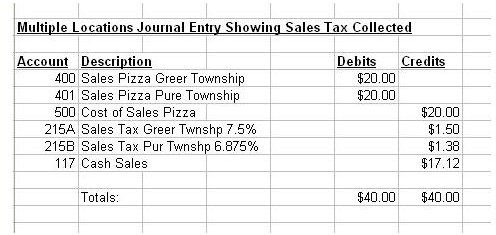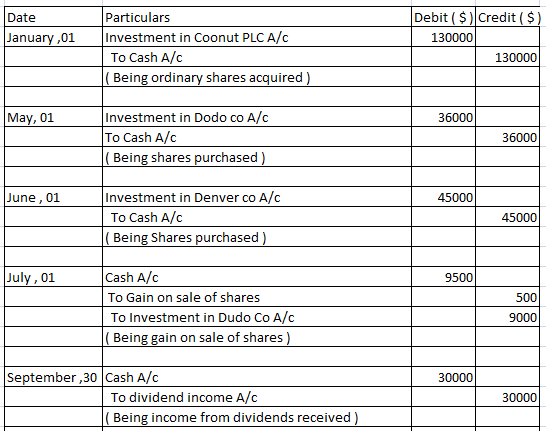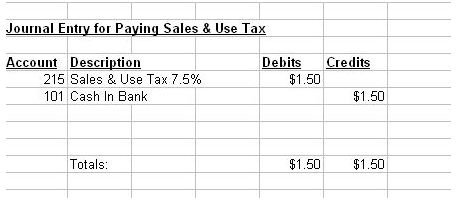

An asset is a present right of an entity to an economic benefit (CF E16).
#Due to due from journal entries examples trial#
A balanced trial balance does not guarantee that there are no errors in the individual ledger entries. The trial balance is a list of the active general ledger accounts with their respective debit and credit balances. However, since national GAAPs often serve as the basis for determining income tax, and since income tax law is reserved for the member states, no single uniform EU chart of accounts exists. The European Commission has spent a great deal of effort on administrative tax harmonisation, and this harmonization is the main focus of the latest version of the EU VAT directive, which aims to achieve better harmonization and support electronic trade documents, such as electronic invoices used in cross border trade, especially within the European Union Value Added Tax Area. The former often define a chart of accounts while the latter does not. In the European union, most countries codify a national GAAP (consistent with the EU accounting directive) and also require IFRS (as outlined by the IAS regulation) for public companies.

While some countries define standard national charts of accounts (for example France and Germany) other countries do not (for example the United States or United Kingdom). International aspects and accounting information interchange – Charts of accounts and tax harmonisation issues In accounting software, using the account number may be a more rapid way to post to an account, and allows accounts to be presented in numeric order rather than alphabetic order. The first digit might, for example, signify the type of account (asset, liability, etc.). Account numbers may be structured to suit the needs of an organization, such as digit/s representing a division of the company, a department, the type of account, etc. Accounts may also be assigned a unique account number by which the account can be identified.

Nomenclature, classification and codification Įach account in the chart of accounts is typically assigned a name.

1 Nomenclature, classification and codification.However, in most countries it is entirely up to each accountant to design the chart of accounts. In some countries, charts of accounts are defined by the accountant from a standard general layouts or as regulated by law. The charts of accounts can be picked from a standard chart of accounts, like the BAS in Sweden. The accounts are typically arranged in the order of the customary appearance of accounts in the financial statements: balance sheet accounts followed by profit and loss accounts. Each nominal ledger account is unique, which allows its ledger to be located. The structure and headings of accounts should assist in consistent posting of transactions. However, in many computerized environments, like the SIE format, only numerical identifiers are allowed. Account numbers can use numerical, alphabetic, or alpha-numeric characters. In computerized accounting systems with computable quantity accounting, the accounts can have a quantity measure definition. Accounts may be added to the chart of accounts as needed they would not generally be removed, especially if any transaction had been posted to the account or if there is a non-zero balance.Īccounts are usually grouped into categories, such as assets, liabilities, equity, revenue and expenses.Īccounts may be associated with an identifier (account number) and a caption or header and are coded by account type. A chart of accounts ( COA) is a list of financial accounts set up, usually by an accountant, for an organization, and available for use by the bookkeeper for recording transactions in the organization's general ledger.


 0 kommentar(er)
0 kommentar(er)
